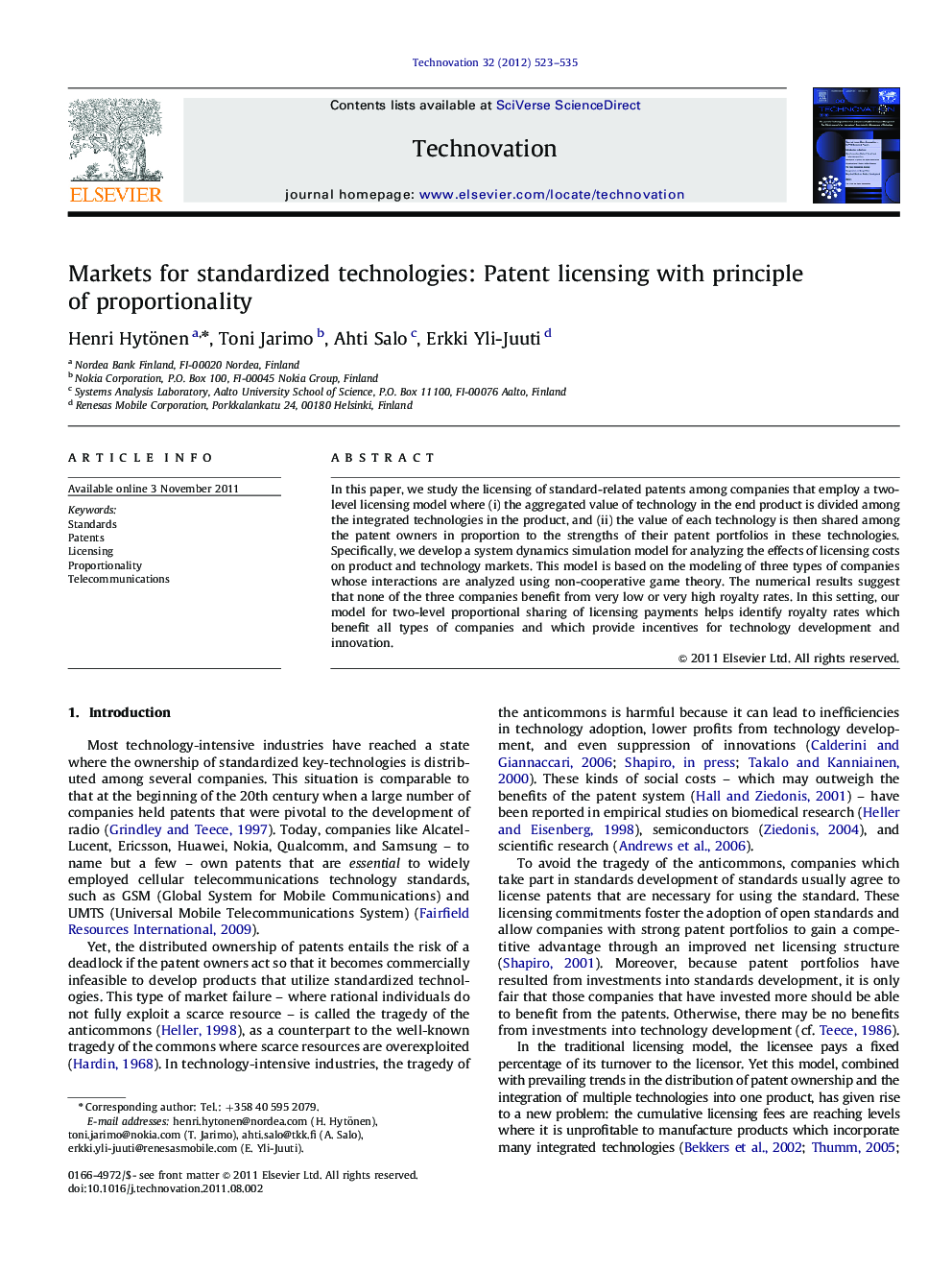| Article ID | Journal | Published Year | Pages | File Type |
|---|---|---|---|---|
| 1022133 | Technovation | 2012 | 13 Pages |
In this paper, we study the licensing of standard-related patents among companies that employ a two-level licensing model where (i) the aggregated value of technology in the end product is divided among the integrated technologies in the product, and (ii) the value of each technology is then shared among the patent owners in proportion to the strengths of their patent portfolios in these technologies. Specifically, we develop a system dynamics simulation model for analyzing the effects of licensing costs on product and technology markets. This model is based on the modeling of three types of companies whose interactions are analyzed using non-cooperative game theory. The numerical results suggest that none of the three companies benefit from very low or very high royalty rates. In this setting, our model for two-level proportional sharing of licensing payments helps identify royalty rates which benefit all types of companies and which provide incentives for technology development and innovation.
► We examine a two-level licensing model in technology standards licensing. ► We model three company types that develop technology and manufacture related products. ► All analyzed company types benefit from moderate levels of royalty payments. ► Too low or too high royalties will discourage either developers or manufacturers.
